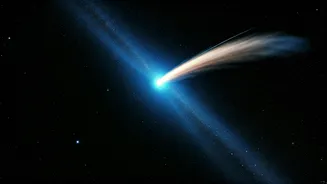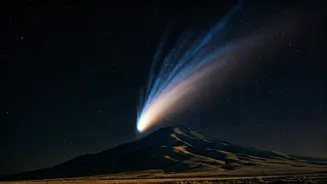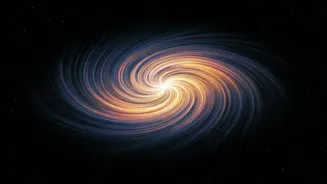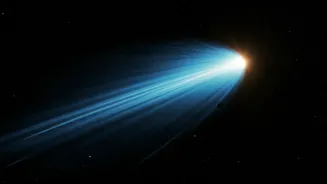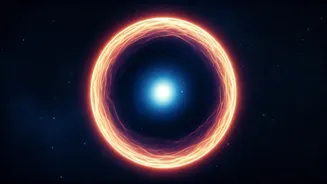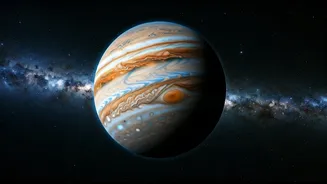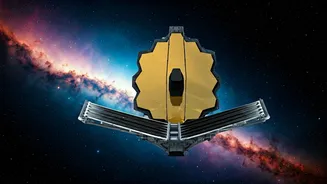Solar Wind's Power
The solar wind, a continuous outflow of charged particles emanating from the sun, is a force of nature capable of significantly impacting celestial objects.
The sun constantly emits this stream of plasma, composed of electrons and protons, that moves outward at high speeds. The speed of the solar wind typically ranges from 300 to 800 kilometers per second. When these particles collide with a comet, they exert pressure, and this pressure is what can alter the shape of a comet's tail. This pressure, combined with the magnetic fields carried by the solar wind, can become strong enough to sever a comet's tail, causing it to disconnect from the comet's nucleus and drift away into space. This disconnection is a dramatic event, but it's also a natural part of how comets evolve, and provides a means of studying solar activity and its effects on space weather.
Comets: Cosmic Snowballs
Comets, sometimes called cosmic snowballs, are icy bodies that travel through space, often orbiting the Sun. They are composed primarily of ice, dust, and rocky particles. As a comet nears the sun, the heat causes the ice to vaporize, producing a coma—a fuzzy cloud that surrounds the comet's nucleus. The solar wind then pushes the coma's material away from the sun, creating the characteristic tails of comets. There are two primary types of comet tails. The first is a dust tail, composed of dust particles that follow the comet's orbit. The second is an ion tail, created by ionized gas, which is more directly affected by the solar wind, often pointing straight away from the sun. Understanding the interplay between comets and solar wind allows scientists to better grasp the conditions within our solar system and the external factors, such as space weather, that affect it.
Tail Disconnection Explained
Tail disconnection is a dramatic event that occurs when the solar wind's pressure and magnetic forces overcome the cohesive forces holding the comet's tail together. This event happens when the magnetic field lines in the solar wind align in a particular way, which can cause the tail to be “cut off” from the comet's nucleus. When this happens, the severed tail drifts off into space, while the comet continues on its orbital path. The detached tail appears as a distinct, separate structure that quickly dissipates, leaving only the comet's new, freshly formed tail. Tail disconnection is not a common occurrence but does provide scientists with an excellent opportunity to study the impact of solar activity on comets and the interplanetary environment. These disconnection events offer insights into the behavior of magnetic fields, as well as the composition and structure of comets.
Observing the Event
Observing a tail disconnection requires careful planning, as the timing is unpredictable. Scientists use specialized telescopes and cameras to track comets, hoping to capture such rare events. The images and data obtained from these observations help scientists understand how the solar wind shapes comets and how they interact with the space environment. The event that took place with Comet Lemmon demonstrated the intense influence of solar wind. The imagery allows astronomers to learn more about the interplay between solar emissions, comets, and the interplanetary medium. These studies reveal more about the solar system’s dynamic nature and the processes shaping its celestial bodies. The ability to capture these events provides a more complete picture of our solar system.
What We Learn
Studying tail disconnection events gives scientists a means of studying the sun and its impact on other objects in our solar system. The way the solar wind affects comets provides insights into space weather, and the dynamics of solar flares and coronal mass ejections. These events can provide clues about how the sun's magnetic field interacts with space, and about the structure of the interplanetary medium. This information helps improve space weather models, which are essential for predicting and preparing for events that may impact satellites, communication systems, and even power grids here on Earth. The study of comets, and the way they respond to solar events, provides a deeper understanding of our space environment.
